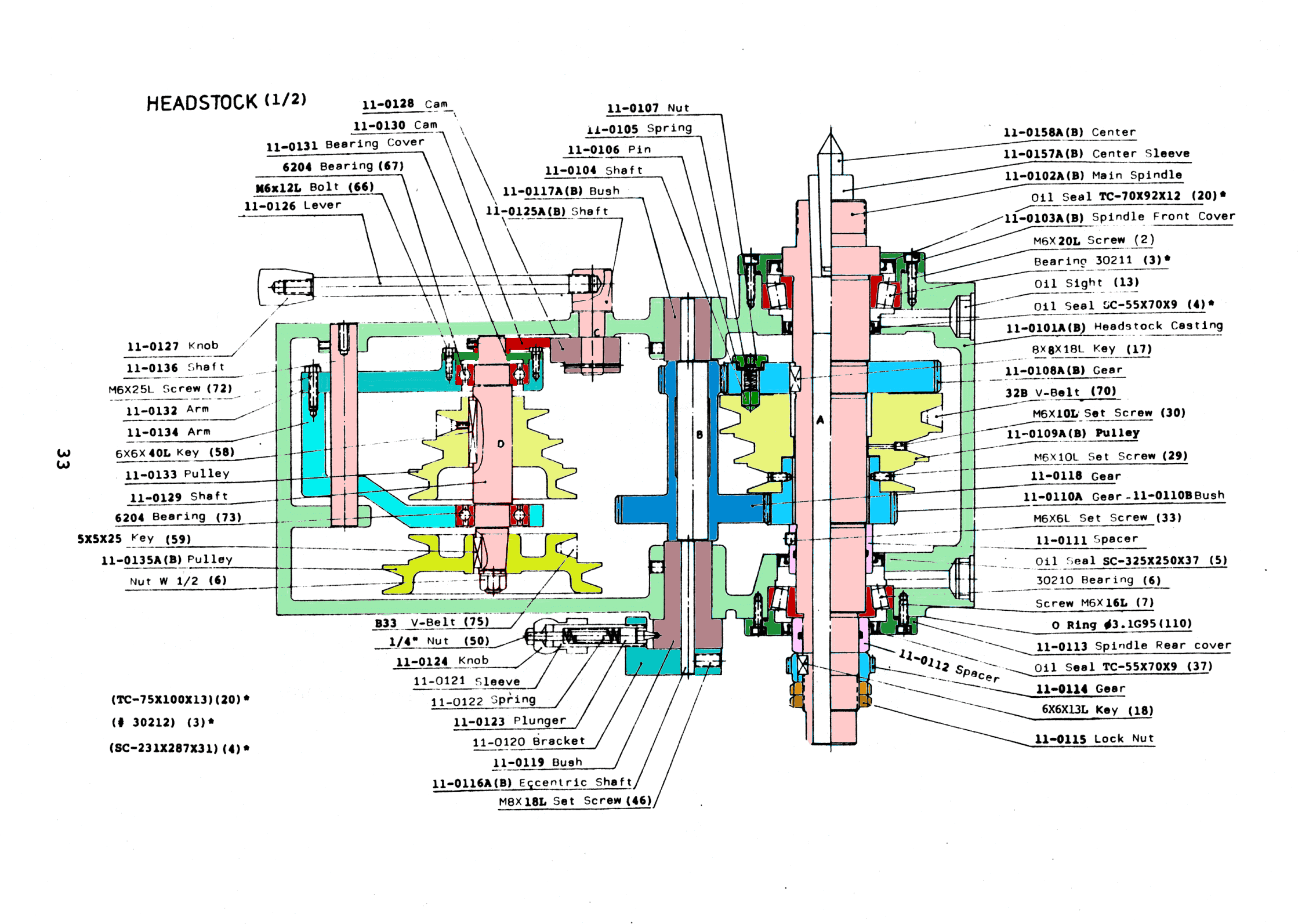What I have is a Jet BDB-1340A belt drive lathe purchased used from a high school auction. Appears to be almost new.
The spindle gets hot, 140F after 15 minutes with no load, and is difficult to turn. So I back off the spindle bearing adjustment nuts. That has no effect. So I leave the nuts loose and hammer the back end of the spindle which moves it. Still runs hot and is tight. So I knock it over some more, thinking that the school might have severely over tightened it. At this point I've moved it .125" or more. Still no improvement. The chuck end now has a lot of side to side play, and the back end has none. I take a big deep throated furniture clamp (I knew it would come in handy some day) and moved the spindle back in. I hoped this would create back bearing side play. It did not. Less play on the chuck end but still no play in the back.
The bearings sound and feel fine. I've run out of ideas. Below is a cross section of my lathe's spindle. Any suggestions are appreciated.

The spindle gets hot, 140F after 15 minutes with no load, and is difficult to turn. So I back off the spindle bearing adjustment nuts. That has no effect. So I leave the nuts loose and hammer the back end of the spindle which moves it. Still runs hot and is tight. So I knock it over some more, thinking that the school might have severely over tightened it. At this point I've moved it .125" or more. Still no improvement. The chuck end now has a lot of side to side play, and the back end has none. I take a big deep throated furniture clamp (I knew it would come in handy some day) and moved the spindle back in. I hoped this would create back bearing side play. It did not. Less play on the chuck end but still no play in the back.
The bearings sound and feel fine. I've run out of ideas. Below is a cross section of my lathe's spindle. Any suggestions are appreciated.






